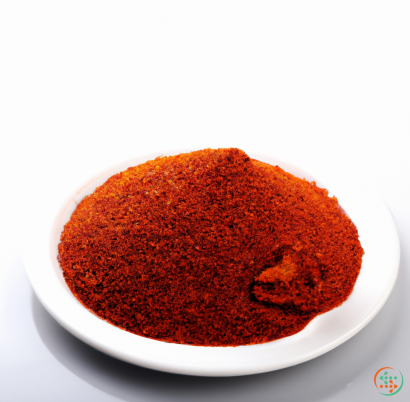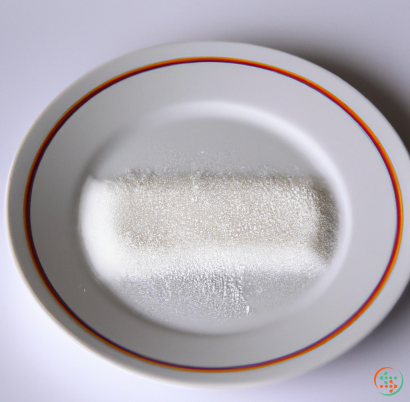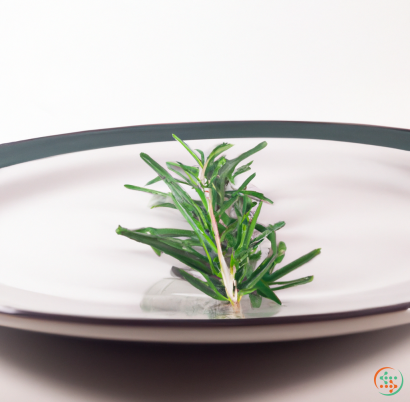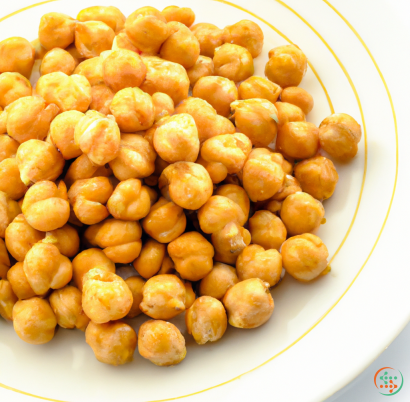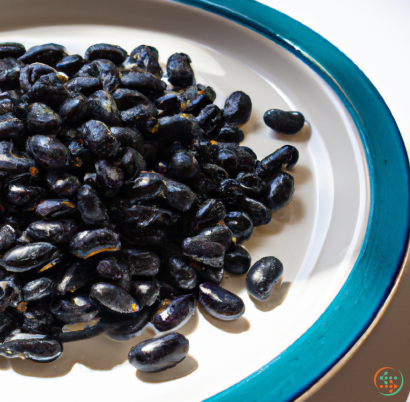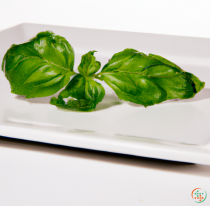Cinnamon
Cinnamon is renowned for its fragrant flavor and aromatic scent, but beyond its cultural recognition, it’s also one of the most versatile and time-honored spices around. This spice holds a significant historical, culinary, and medicinal heritage around the world, with references to it in writings as far back as Ancient Egypt, when it was an especially sought-after ingredient in healing tonics and embalming mixtures.
Cinnamon is a spice derived from the inner bark of a few species of trees in the genus Cinnamomum. These trees are native to the tropics of Southeast Asia, southern China, and Sri Lanka; the latter being the largest producer of true cinnamon. The bark is thick and fibrous when dried, which once cut it curls up into quills. In addition to true cinnamon, there is a closely related species, cassia, belonging to the same genus, which has a slightly different flavor and aroma. Sometimes referred to as ‘false,’ cassia is the more common variety found all around the world, and is usually the cheaper option.
At the point of harvest, cinnamon is in the form of “sticks”, which are the curled-up pieces of inner bark of the respective tree. To make the powder, the sticks are dried, then crushed with a grinding stone before being sifted into a fine, homogeneous blend. The aroma in cinnamon is due to the essential oil contained in it, combining with flavo ketones and phenolic compounds to create a warm smell familiar to many.
Cinnamon has been used in cooking around the world for centuries. Whether in baked goods or curries, cinnamon’s warm, sweet flavor stands out in every dish. Not only that, its naturally antibacterial compounds aid in preserving cooked food, adding to its popularity as an ingredient in traditional recipes. Cinnamon can also be used for beverages such as mulled wine, teas, and even smoothies.
In addition to the culinary use of cinnamon, it has also been long associated with various medicinal properties. Chinese medicine, for example, has incorporated cinnamon as an ingredient in many healing theories and treatments. Although there is no scientific evidence to back up its use as a medical remedy, some studies suggest that cinnamon may have a variety of health benefits. These include anti- inflammatory, antimicrobial, and antioxidant qualities.
With regards to nutrition, cinnamon is packed with essential minerals and vitamins. It contains manganese, calcium, iron and dietary fiber, Vitamin C, and traces of Vitamin A. It’s quite low in calories too, making it a great addition to any health-conscious diet. Cinnamon’s rich nutrient content is believed to help boost cognitive health, immunity, and overall wellbeing.
Finally, cinnamon has found its way into a multitude of cultural traditions. In the Western world it’s often associated with Christmas and wintertime, or associated with family recipes that have been passed down for generations. In other parts of the world, however, it is seen as a religious symbol, with references to it appearing in Jewish and Islamic texts.
The transformative power of cinnamon is there for all to see, and its unique blend of aroma, flavor, and nutrition makes it a treasured spice around the world. Whether you’re looking to add a kick to your meal, to clear your mind, or to just bask in its heavenly smell, cinnamon is sure to offer something special when used correctly.
Cinnamon is a sweet, fragrant spice that has been used for centuries in cooking and as an ingredient in many health remedies. While most people think of cinnamon as nothing more than a pantry staple, it is actually a highly complex product with a fascinating journey from its source to your dinner plate.
From Tree to Cassia Bark
The first step in the journey of cinnamon is to its source: the Cinnamon tree. This tree is native to Sri Lanka, India, and parts of Southeast Asia, and is part of the genus Cinnamomum. The tree is tall, up to 20 meters in height, with long glossy leaves. The bark and leaves of the Cinnamon tree contain several beneficial compounds, including the compound cinnamaldehyde, the source of Cinnamon’s flavor and aroma.
To process Cinnamon, tree bark is harvested twice a year, during late spring and early summer. First, the outer bark is removed using a knife to reveal the inner white bark beneath. This process is repeated until only the innermost bark is exposed. This inner bark, or Cassia bark, is then cut into thin strips which are layered and dried to remove moisture, a process which takes up to a week. Once dry, the bark strips are curled inward to form a quill-like shape, the recognizable form of Cinnamon you find in the supermarket.
Rise of Spice Trade
From India and Southeast Asia, Cinnamon began to spread around the Mediterranean, brought by merchants and traders who had begun to build trade networks with the Spice Islands. Cinnamon was highly sought after by the wealthy, as it was believed to have medicinal, cultural, and culinary value.
In the 15th and 16th centuries, Cinnamon was a valued commodity in Dutch and British colonies, as well as in parts of Arabia and North Africa. By the 18th and 19th centuries, trading routes connecting East to West had become well established, with ports like Amsterdam and Goa becoming hubs for international trade. During this period, Cinnamon production and export surged, with its demand reaching peak popularity.
Sri Lanka, the Birthplace of Cinnamon
Today, the majority of commercial Cinnamon is produced in a small nation next to India: Sri Lanka.
First discovered by Arab traders in the 5th century BC, Sri Lanka has since become world renowned for its production of Cinnamon, producing around 90 percent of the world’s supply. Cultivation of Cinnamon on the island began in earnest in the mid-1600s when Dutch rule was established. The Dutch implemented a monoculture system whereby Cinnamon was grown and processed on large plantations; this system is still in place today.
The unique environment and fertile soils of the island have enabled its Cinnamon industry to become globally renowned. The most sought after variety of Cinnamon, Cinnamomum zeylanicum, or “true Cinnamon,” is only found in Sri Lanka. Other varieties of Cinnamon, like Cassia and Saigon, can be found in other parts of the world but are of inferior quality.
From Bark to Powder
Once the Cinnamon is harvested and cut into strips, it is ready to begin the journey to your dinner plate. First, the strips are ground into a fine powder using specialized machinery; this process produces different Cinnamon grades ranging from ground Cinnamon to the more potent Cinnamon essential oils.
The powder is then packaged and sealed in airtight containers to preserve its flavor and aroma. From the processing plant, the Cinnamon is transported to distribution centers around the world where it is purchased by retailers or end customers.
The Final Step: The Dinner Plate
Finally, Cinnamon finds its way onto your dinner plate, giving food a touch of sweetness as well as its signature aroma. Cinnamon’s unique flavor and nutritional benefits make it a popular ingredient in many dishes around the world, from sweet desserts to savory curries.
Health Benefits of Cinnamon
The journey of Cinnamon is not only interesting, but it is also beneficial to our health. The compound cinnamaldehyde gives Cinnamon its characteristic flavor and aroma, but it also carries several health benefits. For example, research has shown that cinnamaldehyde may help reduce inflammation, improve brain health, and lower blood sugar levels.
Cinnamon is also a rich source of antioxidants, which protect our cells from damage caused by free radicals. Antioxidants can help improve heart health, reduce the risk of cancer, and slow the aging process.
Final Thoughts
From its origins in Sri Lanka to its arrival on your dinner plate, the journey of Cinnamon is both fascinating and beneficial. From its harvesting and cutting to its processing and transport, Cinnamon is produced with a commitment to quality, craftsmanship, and respect for sustainability. Next time you reach for the Cinnamon, remember all the steps it took to get there.
| Vitamin A | 0.015 mg | |
| Beta-Carotene | 0.112 mg | |
| Alpha-Carotene | 0.001 mg | |
| Vitamin E | 0.00232 grams | |
| Vitamin K | 0.0312 mg | |
| Vitamin C | 0.0038 grams | |
| Vitamin B1 | 0.02 mg | |
| Vitamin B2 | 0.04 mg | |
| Vitamin B3 | 0.00133 grams | |
| Vitamin B4 | 0.011 grams | |
| Vitamin B5 | 0.36 mg | |
| Vitamin B6 | 0.16 mg | |
| Vitamin B9 | 0.006 mg |
| Calcium | 1.002 grams |
Daily Value 1.3 g
|
| Iron | 0.00832 grams |
Daily Value 0.018 g
|
| Magnesium | 0.06 grams |
Daily Value 0.4 g
|
| Phosphorus | 0.064 grams |
Daily Value 1.25 g
|
| Potassium | 0.431 grams |
Daily Value 4.7 g
|
| Sodium | 0.01 grams |
Daily Value 2.3 g
|
| Zinc | 0.00183 grams |
Daily Value 0.011 g
|
| Copper | 0.34 mg |
Daily Value 0.9 mg
|
| Manganese | 0.01747 grams |
Daily Value 0.0023 g
|
| Selenium | 0.0031 mg |
Daily Value 0.055 mg
|
| Tryptophan | 0.049 grams | |
| Threonine | 0.136 grams | |
| Isoleucine | 0.146 grams | |
| Leucine | 0.253 grams | |
| Lysine | 0.243 grams | |
| Methionine | 0.078 grams | |
| Cystine | 0.058 grams | |
| Phenylalanine | 0.146 grams | |
| Tyrosine | 0.136 grams | |
| Valine | 0.224 grams | |
| Arginine | 0.166 grams | |
| Histidine | 0.117 grams | |
| Alanine | 0.166 grams | |
| Aspartic Acid | 0.438 grams | |
| Glutamic Acid | 0.37 grams | |
| Glycine | 0.195 grams | |
| Proline | 0.419 grams | |
| Serine | 0.195 grams |
| Glucose | 1.04 grams |
|
| Fructose | 1.11 grams |
|
| Sucrose | 0.02 grams |
|
| Total Sugars | 2.2 grams |
per 100g
|
| Lauric acid (12:0) | 0.01 grams |
|
| Myristic acid (14:0) | 0.01 grams |
|
| Palmitic acid (16:0) | 0.1 grams |
|
| Stearic acid (18:0) | 0.08 grams |
|
| Total Saturated fatty acids: | 0.2 g | |
| Oleic acid (18:1) | 0.25 grams |
|
| Total Monounsaturated fatty acids: | 0.25 g | |
| Omega-3 Alpha-linolenic acid (18:3) | 0.01 grams |
|
| Linolenic acid (18:3) | 0.01 grams |
|
| Linoleic acid (18:2) | 0.04 grams |
|
| Total Polyunsaturated fatty acids: | 0.06 g | |
| Phytosterols | 0.03 grams |
|
| Total Sterols: | 0.03 g | |

